Staying focused can be challenging when living in a world with plenty of information and people’s short attention spans. One question: Can storytelling still capture hearts and minds in content marketing? The answer is a vibrant yes. Stories are the fabric of our shared human experience, and they have the power to captivate and inspire like nothing else. By incorporating effective storytelling techniques into your blog posts, videos, social media content, and other materials, your brand can stand out from uninteresting marketing messages.
Strategic storytelling is a crucial element for achieving content marketing success. It enables you to grab your audience’s attention, establish profound connections, and motivate them to take action. But how can you use storytelling to your advantage in content marketing? This article will provide you with fundamental tactics to create persuasive stories that capture the hearts and minds of your audience.
Key Takeaways
- Profile authentic founder stories that humanize your brand origins and purpose.
- Showcase client success stories demonstrating the power of your offering.
- Structure educational resources as mentor-led story journeys vs. boring bulleted lists.
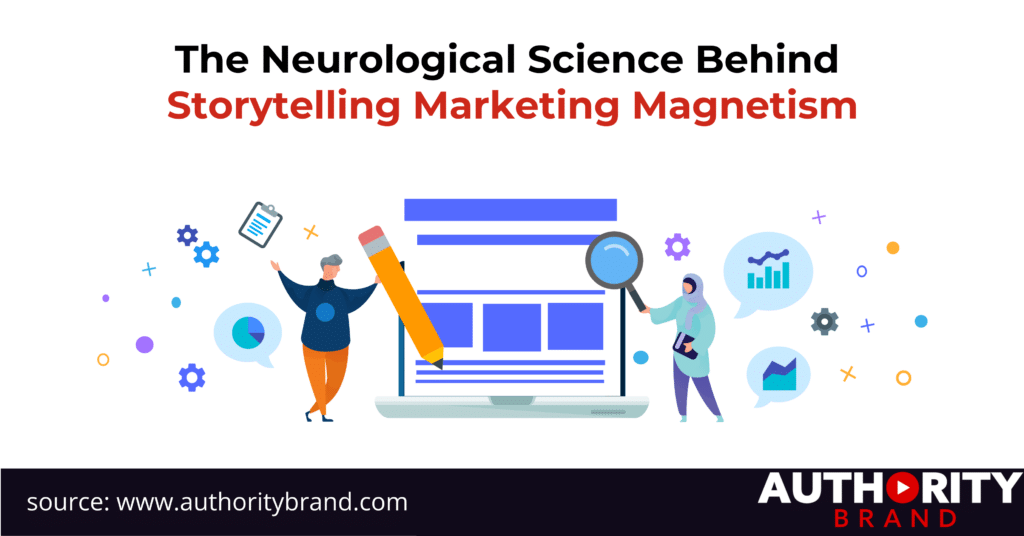
The Neurological Science Behind Storytelling Marketing Magnetism
Storytelling as a communication mode permeates even our neurobiology — the architecture of the human brain evolved to process and relay information through contextual narrative structure. Scientific evidence reveals that when listening to a captivating story, neural regions activate in the brain, allowing listeners to envision themselves at the tale’s heart.
When storytelling components like compelling characters, conflict/resolution, and vivid multi-sensory details feature in our content, brain activity places us within those imagined events. Stories immerse audiences so profoundly that they can elicit robust physiological responses — quickening pulses when suspense mounts or releasing tension when the resolution comes.
Such visceral reactions stem from neurochemicals like cortisol and oxytocin released when engaging with narratives. Higher oxytocin levels spur feelings of empathy and emotional bonds. The brain encodes stories more impactfully through these biochemical interactions and their lasting influence.
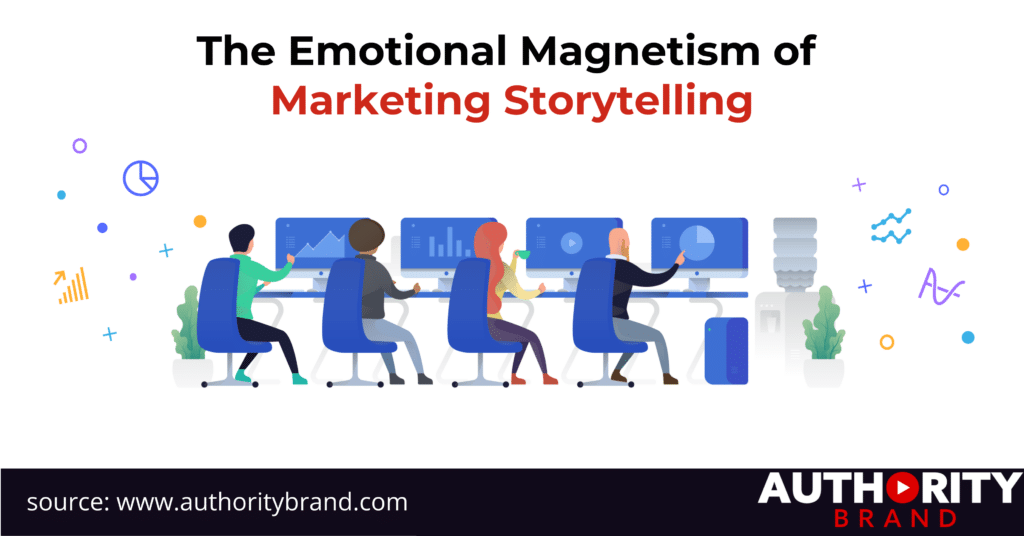
The Emotional Magnetism of Marketing Storytelling
The capability to spark physical responses or imprint so effectively in memory gives marketing storytelling incalculable magnetism for capturing interest. Well-crafted narratives make facts or ideas relatable through emotional resonance. Rather than reciting specs or touting claims we’ve heard countless times before, stories ground messages in easily comprehensible human contexts.
Consider how Apple historically leveraged the underdog narrative — once a fledgling startup battling corporate titans, later revolutionizing consumer electronics through relentless vision and innovation. Such purposeful lore energized the brand for decades. Or how TOMS Shoes masterfully incorporated its give-back mission into an uplifting purchase experience where every sale provided shoes for impoverished children.
These iconic approaches exemplify the ability of marketing storytelling to spur conviction and loyalty through emotional appeal. By showcasing ideals beyond transactions to genuinely better lives, Apple and TOMS transformed satisfied customers into vocal brand devotees because they tapped that intrinsic human yearning for belonging within grand visions advancing society.
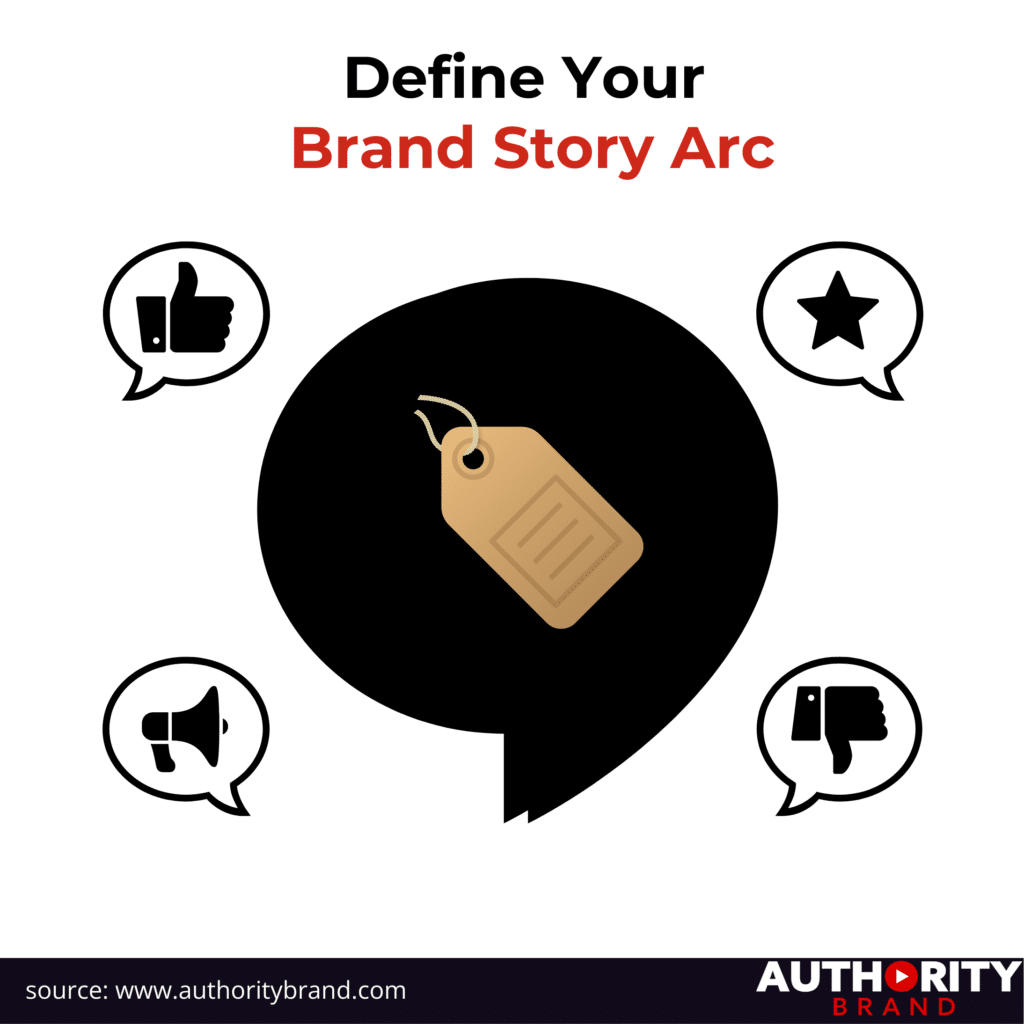
Define Your Brand Story Arc
At the core of great storytelling lies a compelling brand narrative that conveys your origin, mission, and values. Before weaving stories through other materials, ask – what is our brand story arc? Outline key plot points like:
- Founding details – why the brand exists
- Core team/leaders – the people behind it
- Initial struggles – obstacles you overcame
- Defining successes – growth milestones
- Driving mission/purpose – your raison d’être
This background sets the foundation to reference anecdotes from your brand story into content down the line.
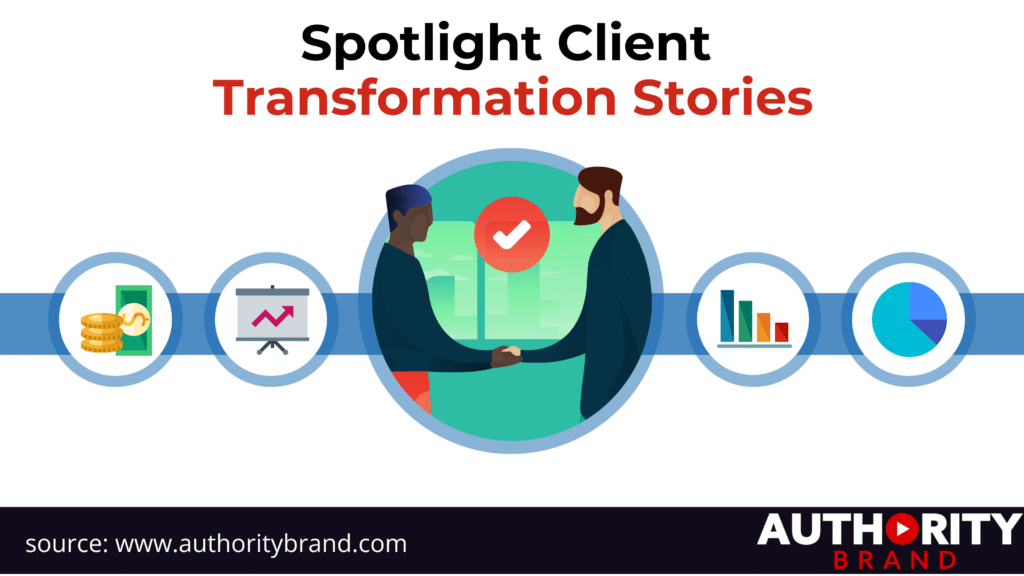
Spotlight Client Transformation Stories
Powerful stories need not be fiction – true stories of customer challenges overcome through your offering make ideal fodder. Collect and highlight inspiring stories of clients who achieved life-changing results.
For example, an online fitness coach could share a client’s journey from being overweight and inactive to training for marathons after customized training. This showcases achievable transformation.
Such client success stories impart authenticity and build trust that you deliver tangible value. Sprinkle these judiciously among blogs, testimonial pages, ads, and more.
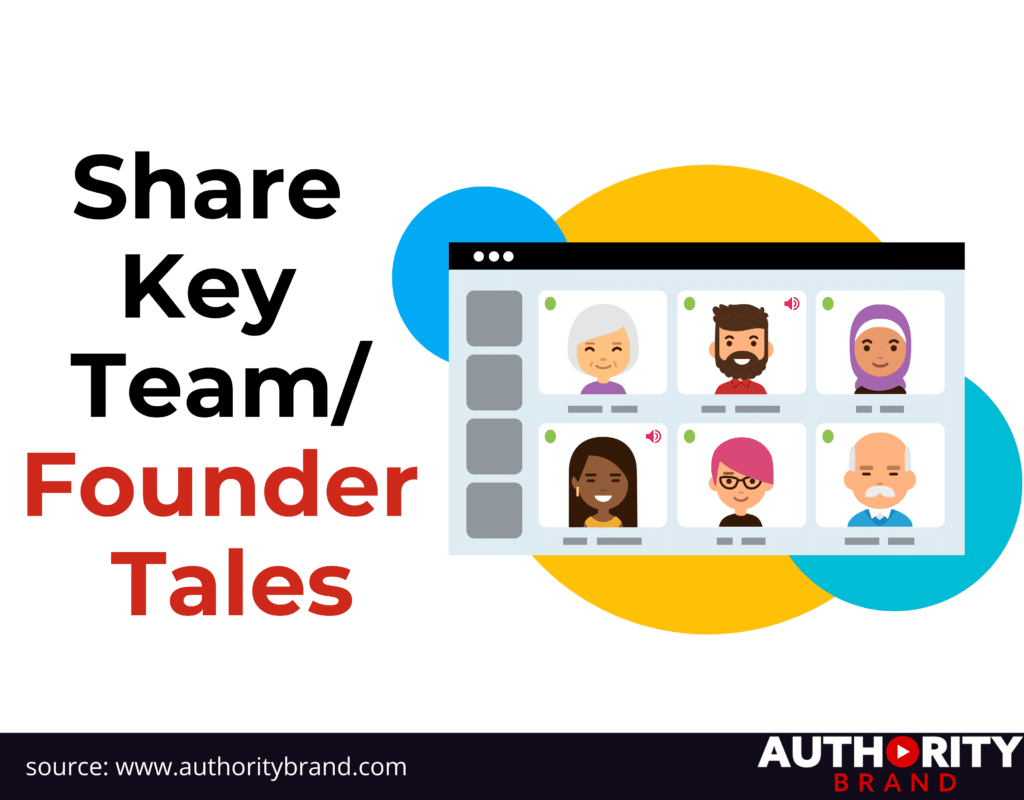
Share Key Team/Founder Tales
What were the driving experiences, early career struggles, and critical lessons shaped company leaders? Profile backstories reveal the all-too-human side beyond job titles – failures that taught essential lessons and obstacles that were building blocks of current success.
This storytelling dimensionalizes executives beyond talking heads into relatable people. Readers start associating memorable moments from your brand’s establishment with the names now, steering it into the future.

Link Current Events To Trends
Tapping into newsworthy happenings allows you to anchor content to issues already capturing public intrigue. Then, seamlessly pivot the narrative towards trends tied to your industry.
For example, coverage around breakthrough medicine could lead to exploring innovations advancing telehealth access and technology. This demonstrates thought leadership through timely insights.

Inform With An Educational Journey
Complex topics become far less intimidating when presented as a story journey versus a dry data dump. Transform educational materials into a mentor guiding learners through challenges step-by-step towards success instead of merely listing facts.
Set the scene of an underlying conflict or knowledge gap holding someone back initially. Then, chronicle conquering hurdles through lessons learned and skills unlocking better outcomes. The reader envisions themselves as the hero of the tale.
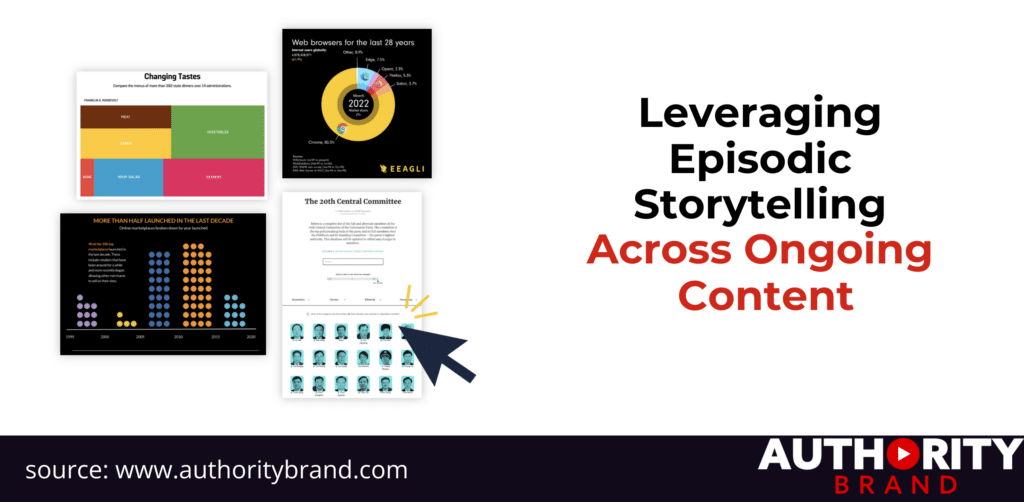
Leveraging Episodic Storytelling Across Ongoing Content
Rather than confining storytelling mostly to long-form mediums like viral videos or intensive blog posts, brands should view all continuous content efforts as episodic opportunities playing into ever-unfolding narratives centered around positioning distinct solutions as apparent aids helping audiences overcome imposed obstacles in due time.
Every piece of published content advances serialized arcs incrementally. Consistently personifying your brand through certain defined traits (the caring coach persona, for example) also strengthens continuity – when characters prove consistent across installments, deeper connections solidify with built-in audiences.
Tactical examples abound for ingraining episodic storytelling mentalities across content properties through subtle yet impactful deviations from conventional approaches:
- Promotional emails chronicle climbing complication developments before cliffhanger calls to action.
- Social advertisement carousels display sequential visual narrative snippets between installments.
- Monthly newsletters function as episodic next-chapter “recaps” while “previewing” impending updates.
- Webinars reveal key characters unveiling new challenges.
- Blog posts tackle rising conflicts.
Using serial storytelling strategies transforms traditionally mundane and repetitive content into binge-worthy episodic adventures.
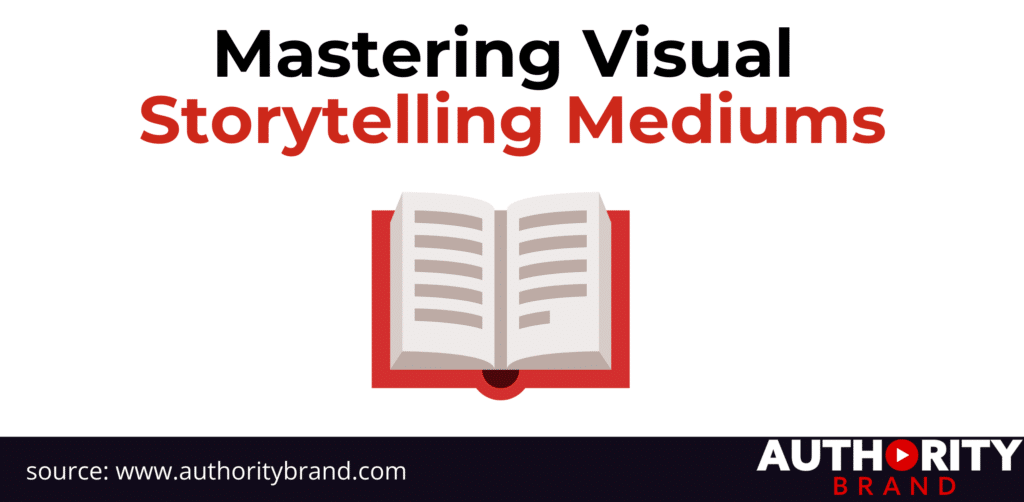
Mastering Visual Storytelling Mediums
Strategically incorporate visual storytelling mediums through the following multimedia considerations:
Animated Shorts: Bring metaphorical concepts or processes to life whimsically or make product functionalities more digestible through animated video demos. Humor and mascot characters help messages resonate.
Infographics: Visually juxtapose “before” and “after” scenario contrasts highlighting bottom lines or showcase staggering community-wide scale impacts unlocked through leveraging your resources that text alone can’t adequately convey at a glance through sharp data viz.
Photo Editorials: Curate a themed image collection focused on a local initiative or campaign you powered behind the scenes with stills capturing candid moments of groups served in action after product implementations.
Instagram Stories: Capture episodic vignette snippets spotlighting a use case in action across multiple images stitched as kinetic slideshows.
Each visual medium offers unique story-framing advantages. Capitalize on these selectively rather than relying only on conventional written narratives.
Masterfully Incorporating Strategic Storytelling Across Content Marketing For Maximum Returns
Storytelling is the most critical aspect of content marketing. The secret sauce can grab a consumer’s attention and forge an unbreakable bond between your brand and your audience. But beware: adopting a formulaic approach can easily backfire and make your narrative appear phony. To keep your audience engaged and coming back for more, it’s essential to master the art of storytelling. Be flexible and willing to embrace new trends to stay ahead of the competition. In doing so, you can position your brand as a faithful ally and earn the trust of a savvy virtual audience.
Frequently Asked Questions
Q: What are examples of good brand stories?
A: Emotive origin stories (Airbnb founders renting air mattresses), founder journeys overcoming adversity, and breakout success moments that imprinted values (Steve Jobs’s early Apple days) make compelling brand stories.
Q: How do you turn customer data into stories?
A: Quantify collective achievements amplified through your product, like lives empowered, jobs obtained, or gallons of water conserved. Break sweeping impacts into digestible anecdotes following one family’sfamily’s uplift thanks to clean drinking access.
Q: What makes storytelling suitable for marketing?
A: Stories boost memorability, allowing messages to endure over facts/data that are quickly forgotten. They also forge emotional connections between audiences and brands, revealing the convictions driving companies on deeper levels.
Q: How do you write a success story?
A: Focus the narrative on relatable client challenges, the customized solution you crafted addressing precise pain points, and culminating in the happy resolution of tangible outcomes/transformations made possible through partnering.
Q: What is a memorable story called?
A: Stories that spark high engagement and sharing to imprint uniquely in readers’ memories have “stickiness” – they possess an emotional resonance and creativity that sets them apart from more analytical content. Brands covet crafting sticky stories that stubbornly endure in audiences’ minds.
While facts and figures certainly have utility in content marketing, storytelling makes messages unforgettable by connecting rationally and emotionally for maximum impact. In 2024, strategically anchor your brand story throughout materials to forge authentic relationships between companies and audiences as reliable partners to achieve mutual success.
Become an Industry Authority: Join Authority Brand
Are you ready to establish yourself as a respected authority by revamping your brand? Join our live masterclass training to kickstart your journey to success! This is an excellent opportunity for you to significantly impact your target audience. It’s time to showcase your expertise and position yourself as the leading authority in your industry. Take advantage of this chance – contact us today and learn how we can help.







